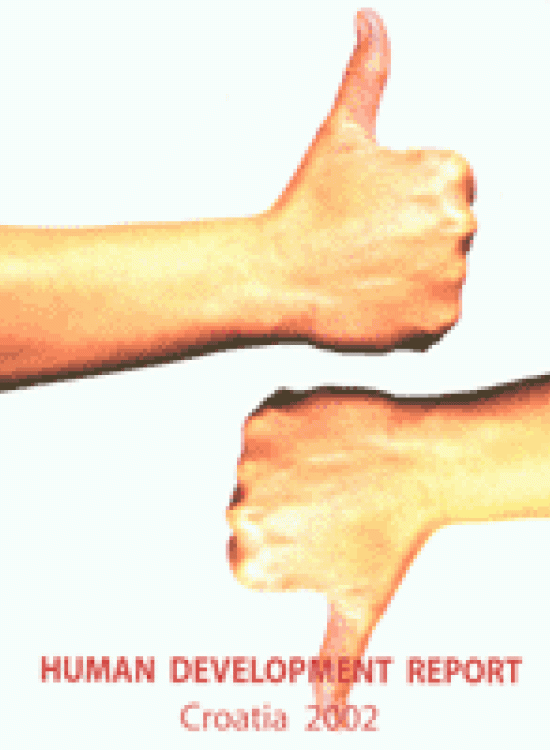Human Development Report Croatia 2002

Citation
Irena Dokie - Researcher (Institute of Economics, Zagreb) , Mathias Ellger - Researcher (Planungsburo M. Ellger) , Andrea Mervar - Researcher (Institute of Economics, Zagreb) , Danijel Nestic - Researcher (Institute of Economics, Zagreb) , Ivana Rasic - Researcher (Institute of Economics, Zagreb) , Ivan Rusan - Researcher (Institute of Economics, Zagreb) , Nenad Starc - Researcher (Institute of Economics, Zagreb) , Matija Skegro - Researcher (Croatian Bureau of Statistics) , Vedran Sosic - Researcher (Croatian National Bank) , Zoran Sucur - Researcher (Law School, University of Zagreb) , Snezana Varga - Researcher (National Bureau of Statistics). 2002. Human Development Report Croatia 2002. New York.
Human Development Report Croatia 2002
Posted on: January 01, 2002
This year the Human Development Report has focused on the position of the people in the economy which after years of stagnation has started to grow. The Report deals with promising macroeconomic results and with persistently high unemployment, growing inequalities and not at all promising poverty. Confronted in this way the economy and the people picture the Croatian transition in the first years of the third Millennium. The Report also deals with an issue that is of utmost importance in the everyday life but nevertheless rarely questioned outside the professional circles – spatial planning. Legislation and practice of Croatian spatial planning are described and confronted with European laws and practice. The measures needed to overcome existing rigidity and shortcomings are proposed. Consideration on spatial planning lead to the issue of statistical regionalization according to the European NUTS classification which has to be introduced in Croatia as an accession requirement. Politics that got involved in the process is commented in particular. In the end, the 2001 Census is shortly presented. Its figures, not unquestionable to all, showed the situation in which the Croatian society found itself 10 years after the war and the transition.